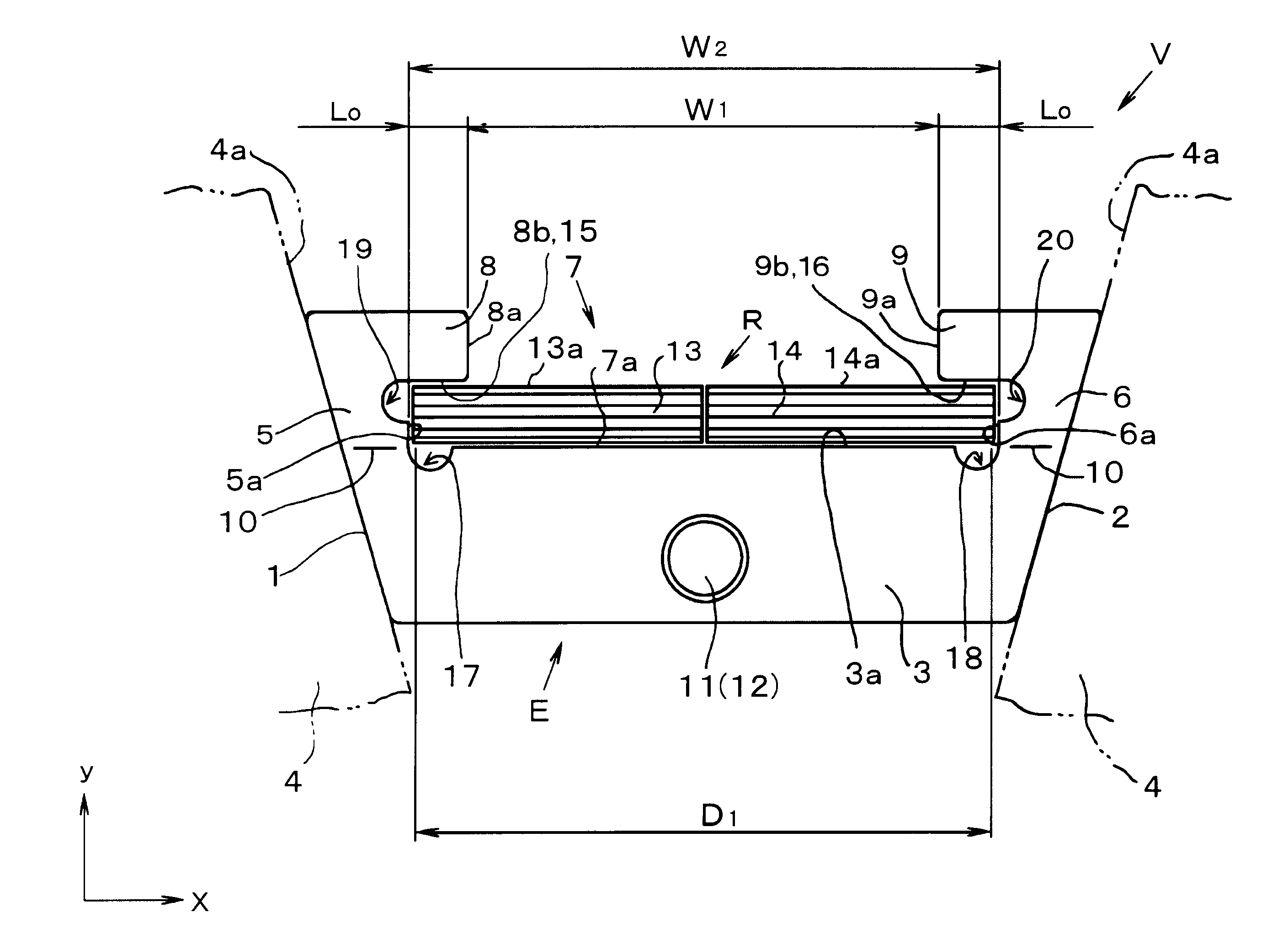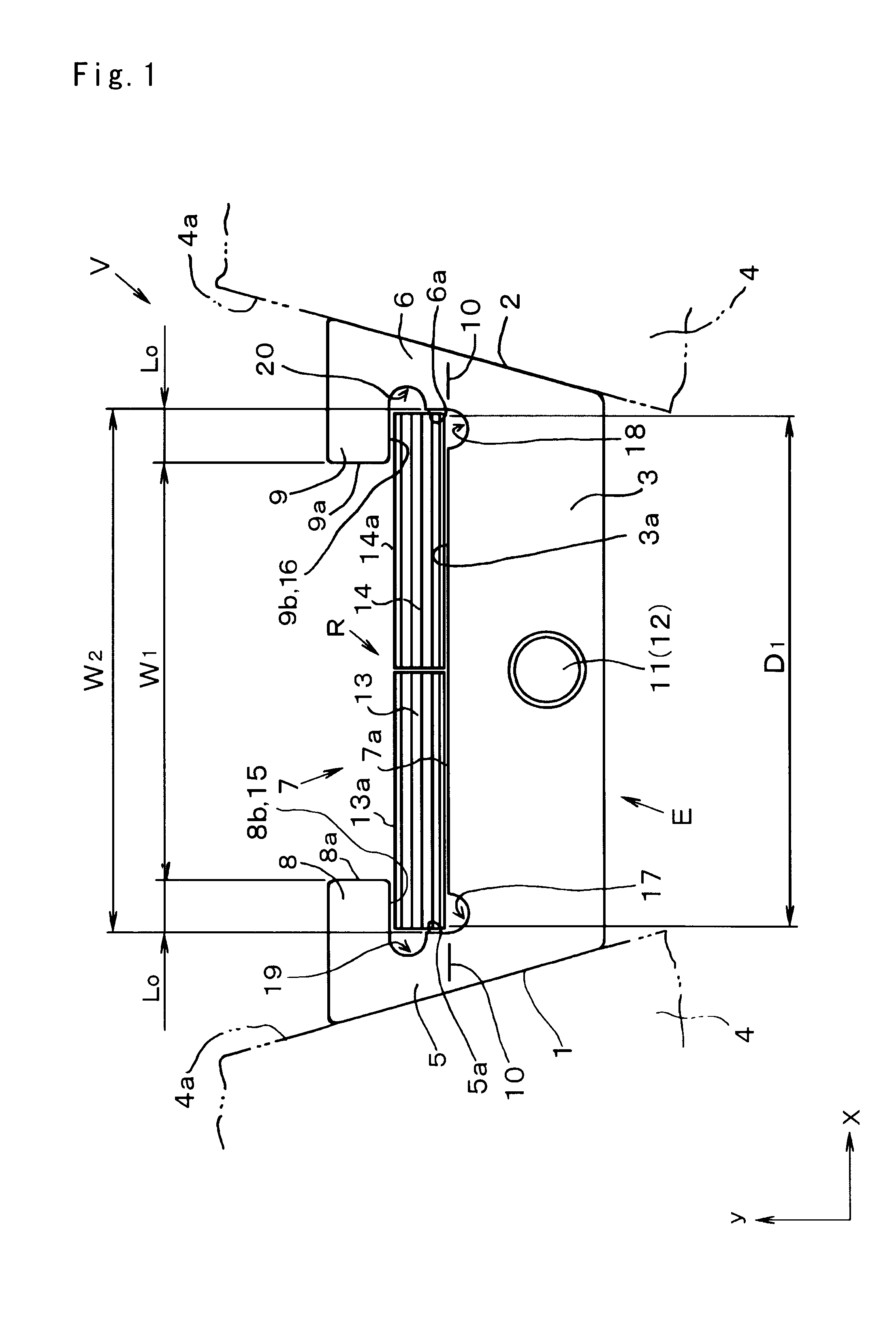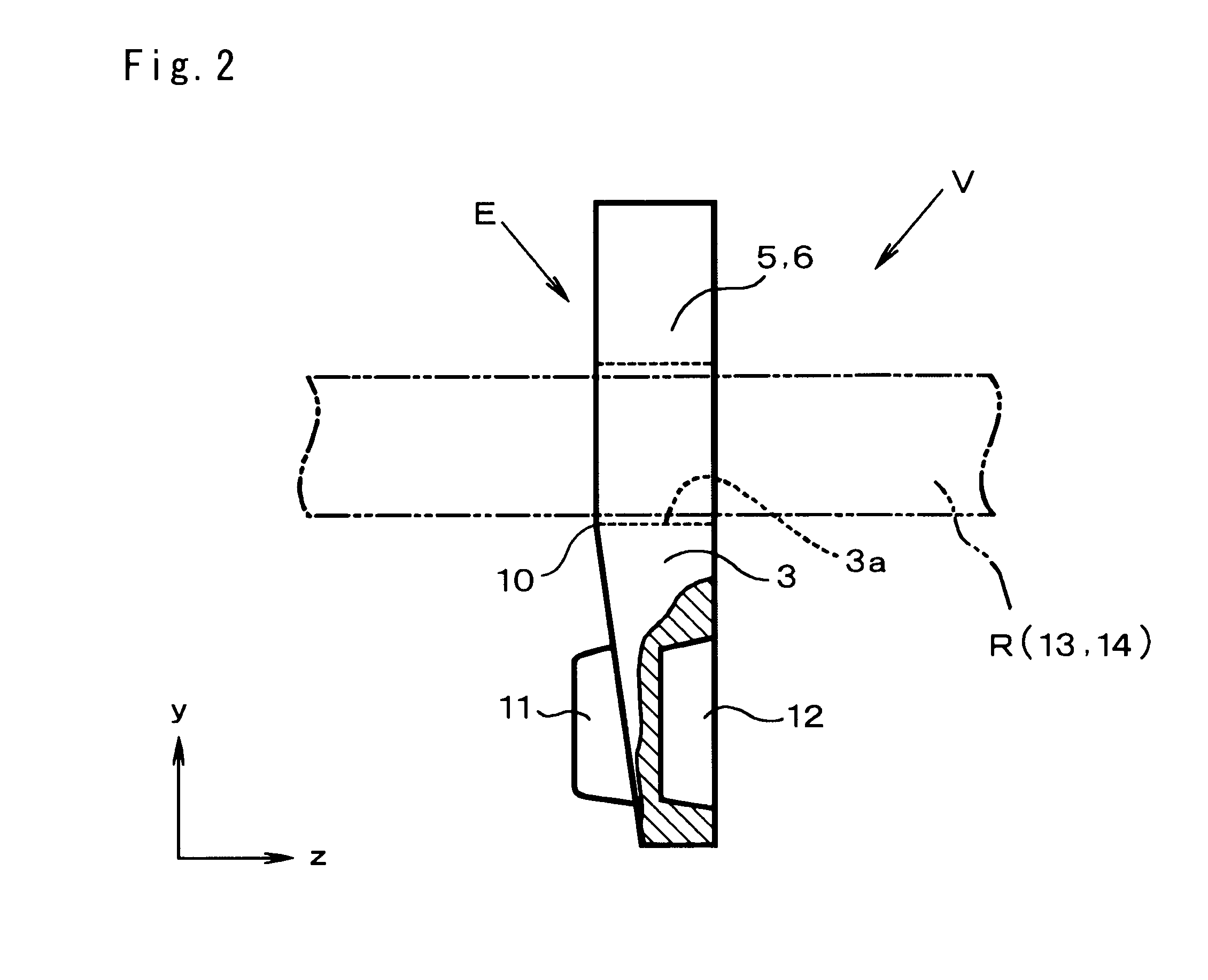Element for driving belt and driving belt
a technology of driving belts and components, applied in the direction of driving belts, belts/chains/gearrings, v-belts, etc., can solve the problems of reducing the work efficiency of the element, and reducing the durability of the element, so as to prevent interference, facilitate the fitting of the ring into the recess of the element, and prevent the effect of degrading the durability
- Summary
- Abstract
- Description
- Claims
- Application Information
AI Technical Summary
Benefits of technology
Problems solved by technology
Method used
Image
Examples
first example
[0028]Next, this invention will be explained with reference to the accompanying drawings. First of all, a first example of the element for a driving belt and a driving belt using the element of the first example will be explained with reference to FIGS. 1 to 3. A driving belt V shown in FIGS. 1 and 2 is adapted to be applied to a drive pulley (i.e., an input shaft) and a driven pulley (i.e., an output shaft) of a belt-type continuously variable transmission to transmit a torque between those pulleys. The driving belt V shown therein comprises an annular ring R and a plurality of plate-like elements E.
[0029]The element E is a metal plate member comprising a base portion (or main body) 3. Both lateral faces 1 and 2 of the base portion 3, that is, both lateral ends (in the direction of x-axis in FIG. 1) of the base portion 3 are inclined. The inclined lateral faces 1 and 2 are frictionally contacted with a V-shaped groove 4a of a drive or driven pulley 4 of the belt type continuously v...
second example
[0060]Next, here will be explained a second example of the element for a driving belt and the driving belt using such element with reference to FIGS. 5 and 6. According to the second example of the present invention, a curved face protruding toward the inner circumferential side is formed on each holding face 15 and 16 of the element E of the first example. Therefore, a detailed explanation of the remaining structures in common with those of the first example will be omitted by allotting common reference numerals to FIGS. 5 and 6.
[0061]As shown in FIGS. 5 and 6, the element E of the second example comprises a curved face 21 formed on the inner face 8b of the latch portion 8, and a curved face 22 formed on the inner face 9b of the latch portion 9. Specifically, as shown in FIG. 6, a cross-sectional shape of each curved face 21 and 22 perpendicular to the thickness direction of the element E is an arcuate having a radius r2, and the curved face 21 and 22 protrude toward the inner circ...
PUM
 Login to View More
Login to View More Abstract
Description
Claims
Application Information
 Login to View More
Login to View More - Generate Ideas
- Intellectual Property
- Life Sciences
- Materials
- Tech Scout
- Unparalleled Data Quality
- Higher Quality Content
- 60% Fewer Hallucinations
Browse by: Latest US Patents, China's latest patents, Technical Efficacy Thesaurus, Application Domain, Technology Topic, Popular Technical Reports.
© 2025 PatSnap. All rights reserved.Legal|Privacy policy|Modern Slavery Act Transparency Statement|Sitemap|About US| Contact US: help@patsnap.com



